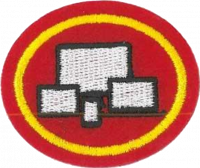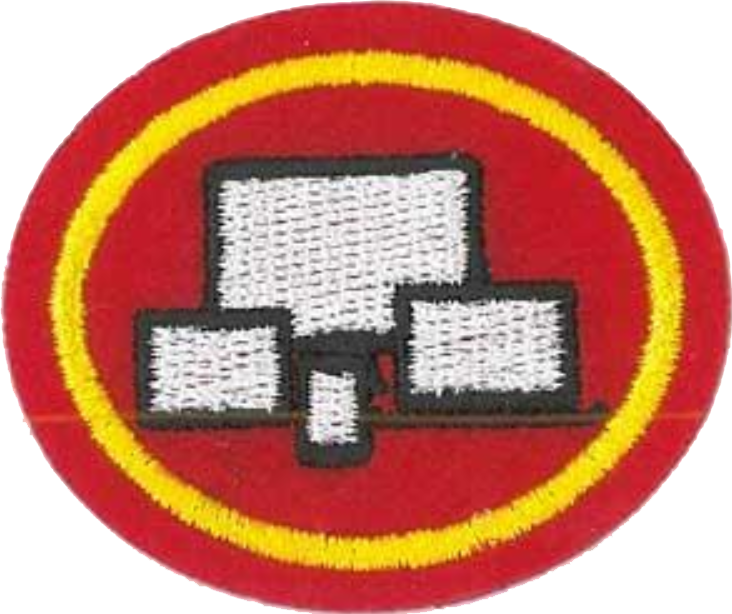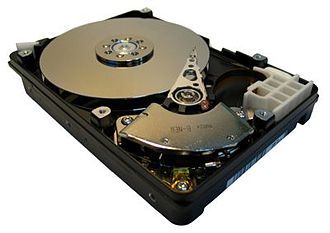Difference between revisions of "AY Honors/Computers/Answer Key/es"
(Created page with "</noinclude> <!-- 2. Describir el adecuado manejo y las técnicas de almacenamiento de discos, CDs, CDRs, DVDs, unidades USB y otros dispositivos de medios ópticos equivalent...") |
(Created page with "</noinclude> <!-- 5. ¿Cuáles son las ventajas de incrementar la velocidad del procesador, la capacidad del disco duro y la memoria (RAM) en la computadora? -->") |
||
| Line 83: | Line 83: | ||
<!-- 2. Describir el adecuado manejo y las técnicas de almacenamiento de discos, CDs, CDRs, DVDs, unidades USB y otros dispositivos de medios ópticos equivalentes. --> | <!-- 2. Describir el adecuado manejo y las técnicas de almacenamiento de discos, CDs, CDRs, DVDs, unidades USB y otros dispositivos de medios ópticos equivalentes. --> | ||
| − | + | {{clear}} | |
| − | |||
| − | |||
| − | + | <noinclude></noinclude> | |
| − | <noinclude | ||
| − | |||
{{CloseReq}} <!-- 2 --> | {{CloseReq}} <!-- 2 --> | ||
{{ansreq|page={{#titleparts:{{PAGENAME}}|2|1}}|num=3}} | {{ansreq|page={{#titleparts:{{PAGENAME}}|2|1}}|num=3}} | ||
| − | <noinclude> | + | <noinclude></noinclude> |
| − | </noinclude> | + | <!-- 3. Explicar la diferencia entre solo lectura, copiar solo una vez, grabar-regrabar. ¿Cuáles son algunos ejemplos de cada uno? --> |
| − | <!-- 3. | ||
| − | |||
| − | |||
| − | |||
| − | |||
| − | + | <noinclude></noinclude> | |
| − | <noinclude | ||
| − | |||
{{CloseReq}} <!-- 3 --> | {{CloseReq}} <!-- 3 --> | ||
{{ansreq|page={{#titleparts:{{PAGENAME}}|2|1}}|num=4}} | {{ansreq|page={{#titleparts:{{PAGENAME}}|2|1}}|num=4}} | ||
| − | <noinclude> | + | <noinclude></noinclude> |
| − | </noinclude> | + | <!-- 4. Determinar lo siguiente en el sistema de una computadora: --> |
| − | <!-- 4. | ||
| − | |||
| − | |||
| − | |||
| − | + | {{clear}} | |
| − | |||
| − | |||
<div lang="en" dir="ltr" class="mw-content-ltr"> | <div lang="en" dir="ltr" class="mw-content-ltr"> | ||
| Line 154: | Line 137: | ||
</div> | </div> | ||
| − | + | <noinclude></noinclude> | |
| − | <noinclude | ||
| − | |||
{{CloseReq}} <!-- 4 --> | {{CloseReq}} <!-- 4 --> | ||
{{ansreq|page={{#titleparts:{{PAGENAME}}|2|1}}|num=5}} | {{ansreq|page={{#titleparts:{{PAGENAME}}|2|1}}|num=5}} | ||
| − | <noinclude> | + | <noinclude></noinclude> |
| − | </noinclude> | + | <!-- 5. ¿Cuáles son las ventajas de incrementar la velocidad del procesador, la capacidad del disco duro y la memoria (RAM) en la computadora? --> |
| − | <!-- 5. | ||
| − | |||
| − | |||
| − | + | {{clear}} | |
| − | |||
| − | |||
| − | + | <noinclude></noinclude> | |
| − | <noinclude | ||
| − | |||
{{CloseReq}} <!-- 5 --> | {{CloseReq}} <!-- 5 --> | ||
{{ansreq|page={{#titleparts:{{PAGENAME}}|2|1}}|num=6}} | {{ansreq|page={{#titleparts:{{PAGENAME}}|2|1}}|num=6}} | ||
| − | <noinclude> | + | <noinclude></noinclude> |
| − | </noinclude> | + | <!-- 6. Hacer una lista de dos tipos de impresoras y explicar los usos y ventajas de cada uno. --> |
| − | <!-- 6. | + | ===Impresora láser=== |
| − | === | + | {{:Adventist Youth Honors Answer Book/Computers/Laser printer/es}} |
| − | {{:Adventist Youth Honors Answer Book/Computers/Laser printer}} | + | ===Impresora de inyección=== |
| − | === | + | {{:Adventist Youth Honors Answer Book/Computers/Ink jet printer/es}} |
| − | {{:Adventist Youth Honors Answer Book/Computers/Ink jet printer}} | ||
| − | |||
| − | + | <noinclude></noinclude> | |
| − | <noinclude | ||
| − | |||
{{CloseReq}} <!-- 6 --> | {{CloseReq}} <!-- 6 --> | ||
{{ansreq|page={{#titleparts:{{PAGENAME}}|2|1}}|num=7}} | {{ansreq|page={{#titleparts:{{PAGENAME}}|2|1}}|num=7}} | ||
| − | <noinclude> | + | <noinclude></noinclude> |
| − | </noinclude> | + | <!-- 7. Explicar cómo cada uno de los siguientes elementos ayuda a proteger el sistema de la computadora. ¿Por qué la seguridad de la computadora es tan importante? --> |
| − | <!-- 7. | + | <noinclude></noinclude> |
| − | <noinclude | ||
| − | |||
{{ansreq|page={{#titleparts:{{PAGENAME}}|2|1}}|num=7a}} | {{ansreq|page={{#titleparts:{{PAGENAME}}|2|1}}|num=7a}} | ||
| − | <noinclude> | + | <noinclude></noinclude> |
| − | </noinclude> | + | <noinclude></noinclude> |
| − | |||
| − | <noinclude | ||
| − | |||
{{CloseReq}} <!-- 7a --> | {{CloseReq}} <!-- 7a --> | ||
{{ansreq|page={{#titleparts:{{PAGENAME}}|2|1}}|num=7b}} | {{ansreq|page={{#titleparts:{{PAGENAME}}|2|1}}|num=7b}} | ||
| − | <noinclude> | + | <noinclude></noinclude> |
| − | </noinclude | ||
| − | |||
| − | |||
| − | + | <noinclude></noinclude> | |
| − | <noinclude | ||
| − | |||
{{CloseReq}} <!-- 7b --> | {{CloseReq}} <!-- 7b --> | ||
{{ansreq|page={{#titleparts:{{PAGENAME}}|2|1}}|num=7c}} <!--T:19--> | {{ansreq|page={{#titleparts:{{PAGENAME}}|2|1}}|num=7c}} <!--T:19--> | ||
| − | <noinclude> | + | <noinclude></noinclude> |
| − | </noinclude> | + | <noinclude></noinclude> |
| − | |||
| − | <noinclude | ||
| − | |||
{{CloseReq}} <!-- 7c --> | {{CloseReq}} <!-- 7c --> | ||
{{ansreq|page={{#titleparts:{{PAGENAME}}|2|1}}|num=7d}} | {{ansreq|page={{#titleparts:{{PAGENAME}}|2|1}}|num=7d}} | ||
| − | <noinclude> | + | <noinclude></noinclude> |
| − | </noinclude | ||
| − | |||
| − | |||
| − | + | {{clear}} | |
| − | |||
| − | |||
| − | + | <noinclude></noinclude> | |
| − | <noinclude | ||
| − | |||
{{CloseReq}} <!-- 7d --> | {{CloseReq}} <!-- 7d --> | ||
{{CloseReq}} <!-- 7 --> | {{CloseReq}} <!-- 7 --> | ||
Revision as of 13:56, 17 May 2021
1
1a
1b
1c
1d
1e
1f
1g
1h
1i
1j
1k
1l
1m
1n
1o
1p
2
3
4
- a. Velocidad del procesador
- b. Capacidad de almacenamiento en el disco duro
- c. Capacidad de memoria (RAM)
Be sure to pay attention to the use of the left mouse button verses the right mouse button.
Mac
Click on the "Apple" at the top left corner of the screen. Now click on "About This Mac". This will bring up a window that contains the processor type and speed and how much memory the computer has. To find the storage capacity on the hard drive, click the "More Info..." button. Now click on "ATA" under "Hardware". There should be two "ATA Bus" sections. Click on the bottom section or the one that doesn't contain anything about a CD drive. The hard drive capacity is under "Capacity".
Linux
At the command prompt, type the following command:
cat /proc/cpuinfo
This will tell you the processor speed as well as the memory capacity. For the storage capacity, type:
df
This will yield an output similar to this:
Filesystem 1K-blocks Used Available Use% Mounted on /dev/hda2 20315844 7085116 12182088 37% / /dev/hda1 101086 11451 84416 12% /boot /dev/hda5 16674136 12303988 3523124 78% /home
This output above indicates that the computer has a single hard drive with three partitions. The first of these is the root partition which has a total capacity of 20 Gigabytes, the second is 101 Megabytes, and the third is 16.7 Gigabytes.
5
6
Impresora láser
Adventist Youth Honors Answer Book/Computers/Laser printer/es
Impresora de inyección
Adventist Youth Honors Answer Book/Computers/Ink jet printer/es
7
7a
7b
7c
7d
8
This research should be performed by the person earning the honor, but we will provide a few names for plugging into a search engine:
Steve Wozniak and Steve Jobs are probably the most important people in the early history of personal computer hardware, as together, they formed Apple Computer which produced the first commercially viable home computer. Bill Gates and the company he founded (Microsoft) have had more influence on computer software than anyone else. Other people to know about include Brian Kernighan, Dennis Ritchie, Ken Thompson, Richard Stallman, Vint Cerf, and Linus Torvalds.
9
So then, each of us will give an account of himself to God. - Romans 14:12, NIV
My times are in your hands; deliver me from my enemies and from those who pursue me. - Psalm 14:12, NIV
Be very careful, then, how you live—not as unwise but as wise, making the most of every opportunity, because the days are evil. - Ephesians 5:15-16, NIV.
We are responsible for how we spend our time, and God expects us to use it in His service. Ecclesiastes 3:1-8 starts out
There is a time for everything, and a season for every activity under heaven: a time to be born and a time to die, a time to plant and a time to uproot - Ecclesiastes 3:1,2, NIV.
Likewise, there is a time to compute and a time to not compute. It is very easy to become addicted to computing, and as with all things, moderation is the key to temperance.
10
- a. ¿Qué sistema operativo usan ambas? ¿Cuáles son algunas ventajas de esos sistemas operativos?
- b. ¿Qué problemas de compatibilidad tienen esas dos tipos de computadoras en relación a compartir los datos e instalación de programas?
- c. ¿Qué clase de industrias/carreras tienden a usar cada clase de sistema de computadoras?
With the importance of computing in today's world, it is highly likely that you know someone who could be described as "a long-term computer user." Perhaps a staff member in your Pathfinder club fits this description. Invite this person to attend a meeting to have this discussion. It would be a good idea to provide this person with the questions ahead of time to provide ample opportunity for preparations.




